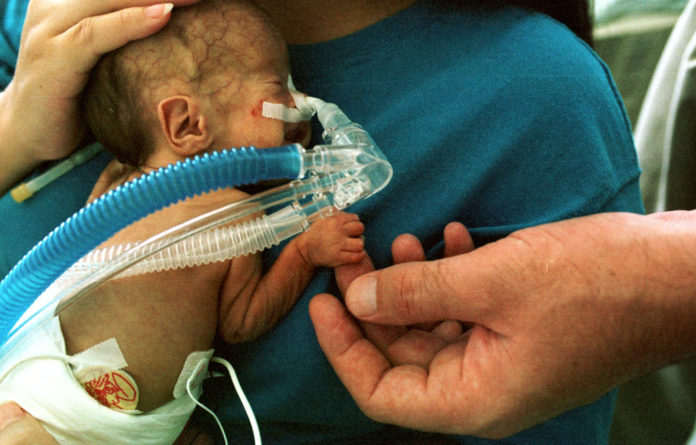Johns Hopkins study shows huge disparities among Indian states in child deaths, especially those under five years old
India in 2015 had more deaths among children under five than any other country. There were large disparities in the under-five mortality rate between richer and poorer states, according to a study led by researchers at the Johns Hopkins Bloomberg School of Public Health.
In the study, published in The Lancet Global Health, the researchers analyzed state-level Indian data on the causes of death among children under five for the years 2000-2015. They found that India made great progress during the period, reducing annual mortality among children under five from 2.5 million in 2000 to 1.2 million in 2015. But among India’s states, great disparities remained: The highest mortality rate, in Assam, a state in northeastern India, was more than 7 times that in the western state of Goa. Although most under-five deaths were due to preterm complications, preventable infectious diseases featured prominently as causes of death in higher-mortality states.
“India can accelerate its reduction of under-five mortality rates by scaling up vaccine coverage and improving childbirth and neonatal care, especially in states where mortality rates remain high,” says study co-lead author Li Liu, PhD, assistant professor in the Department of Population, Family and Reproductive Health at the Bloomberg School.
The research team included scientists from the Bloomberg School, the London School of Hygiene & Tropical Medicine, World Health Organization (WHO), Indian government health and vital records agencies and other institutions. The other co-lead author was Yue Chu, MSPH, a research associate in the Department of International Health at the Bloomberg School.
The highest mortality rate, in Assam, a state in northeastern India, was more than 7 times that in the western state of Goa. Although most under-five deaths were due to preterm complications, preventable infectious diseases featured prominently as causes of death in higher-mortality states
Using data sources such as Indian government health surveys, the team assessed total mortality, mortality rates and causes of mortality for children under five in India’s 25 major states. Such large analyses help governments gauge their progress and allocate resources as needed to reach public health goals. These goals include one of the United Nations Millennium Development Goals (MDG) set in the year 2000: to reduce the under-five mortality rate in 2015 to one-third of the 1990 figure. For India that would have meant reducing the under-five mortality rate to 39 deaths per 1,000 live births. The analysis showed, however, that despite great progress since 1990—and even since 2000 when the under-five mortality rate was 90.5 deaths per 1,000 live births—India in 2015 was still well above the MDG target, at 47.8 deaths per 1,000 live births.
Most (57.9 percent) of deaths among Indian children under five in 2015 occurred in the first four weeks of life—the neonatal period. Countrywide, the leading cause of death for children under five was preterm birth complications, which accounted for 27.5 percent of the mortality total. But second on the list for cause-of-death was pneumonia (15.9 percent of deaths), and infectious illnesses were more often among the top causes in the poorer, high-mortality states.
“Noncommunicable diseases such as preterm birth complications and congenital abnormalities were usually the leading causes in states with low under-five mortality,” Liu says.
Although progress in reducing the under-five mortality rate has been occurring throughout India, the period from 2000 to 2015 saw widening disparities among richer and poorer states—ranging from Goa’s 9.7 under-five deaths per 1,000 live births to Assam’s 73.1. Liu and colleagues used as a basic indicator of overall disparity the ratio of the highest regional mortality rate (Northeast region) vs. the lowest (South region), and found that that ratio increased from 1.4 in 2000 to 2.1 in 2015.
To accelerate India’s progress against child mortality, the team recommends more extensive use of childhood vaccines, particularly against pneumonia- and meningitis-causing Streptococcus and H. influenzae bacteria. They also advocate—especially for higher-mortality regions—a scaling up of standard care strategies for newborns, including “kangaroo care” in which the baby rests against the mother’s skin, thermal care to reduce hypothermia and early initiation of breastfeeding.


